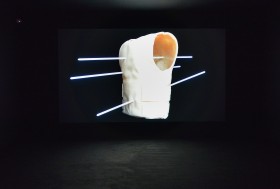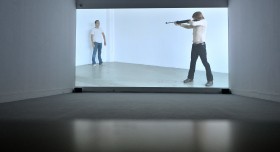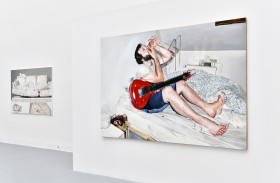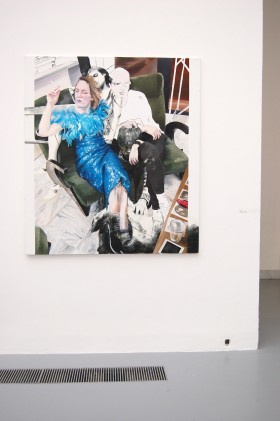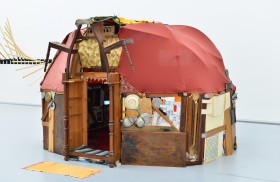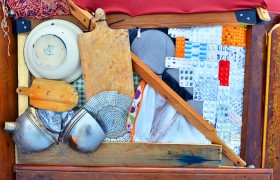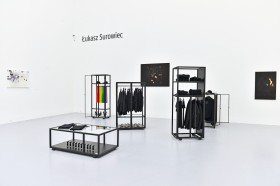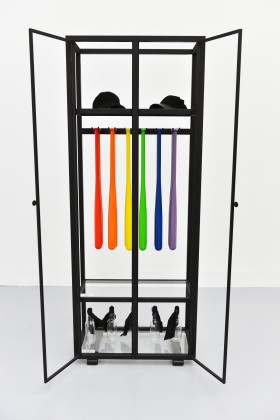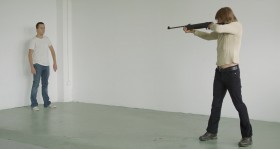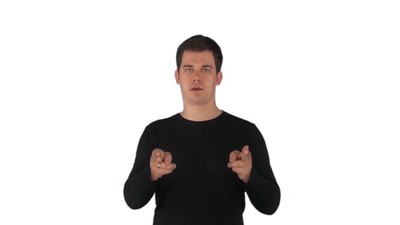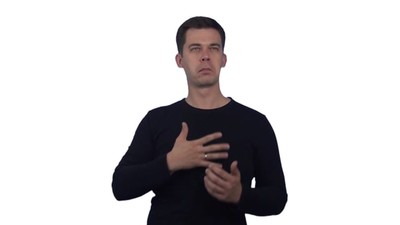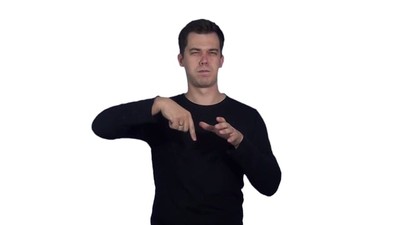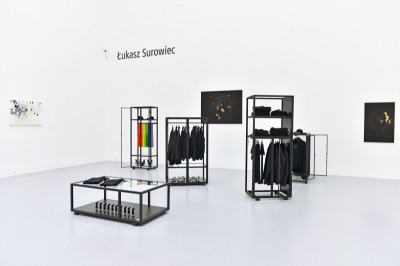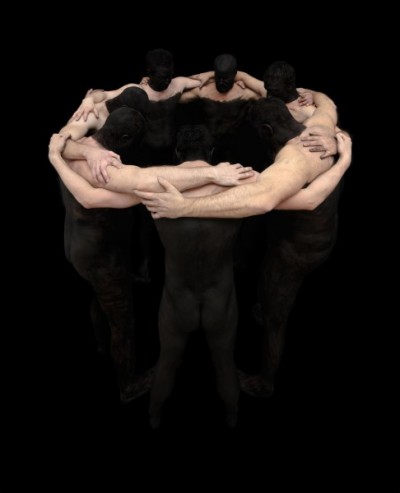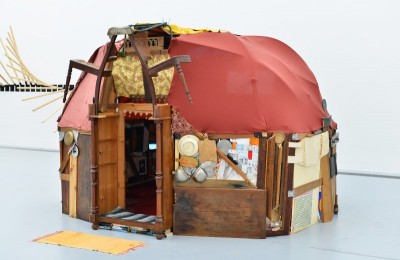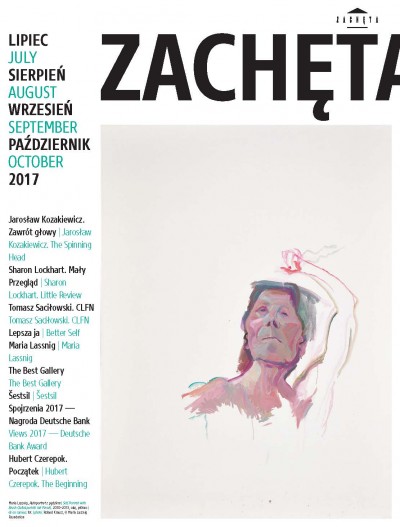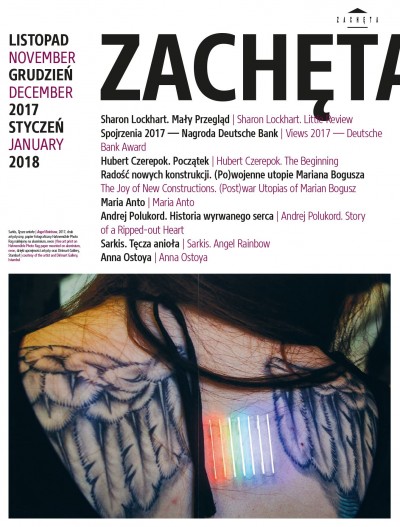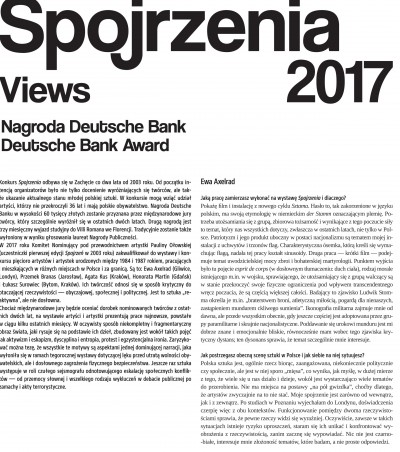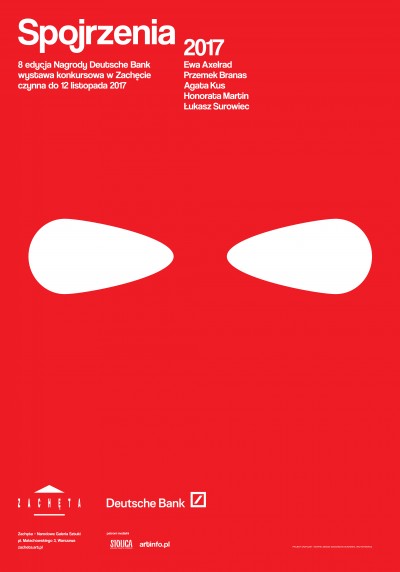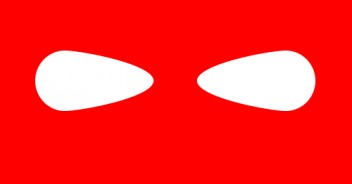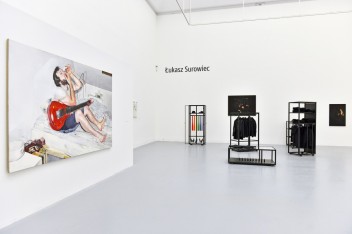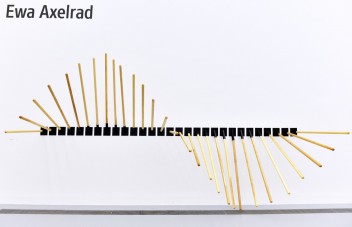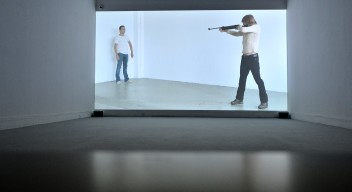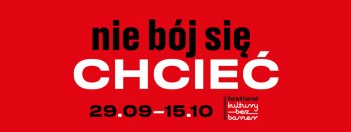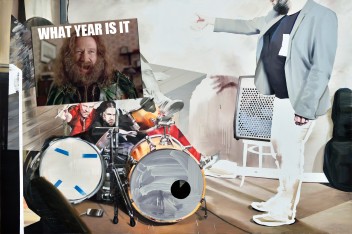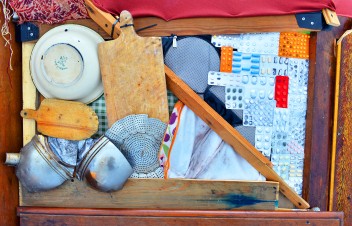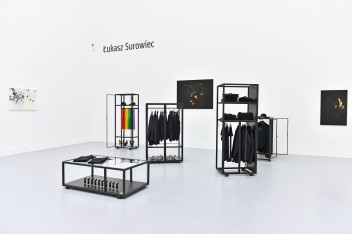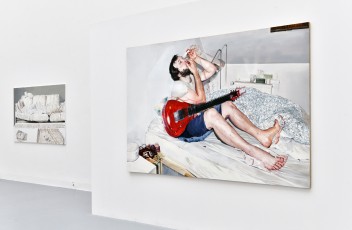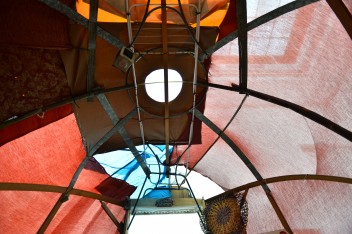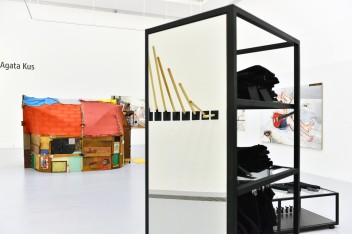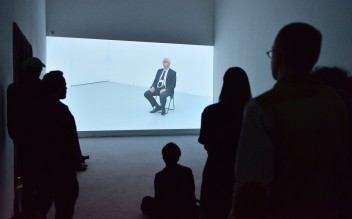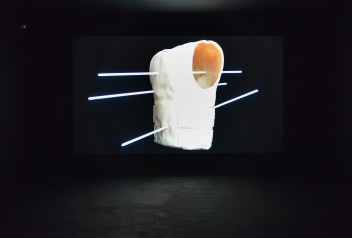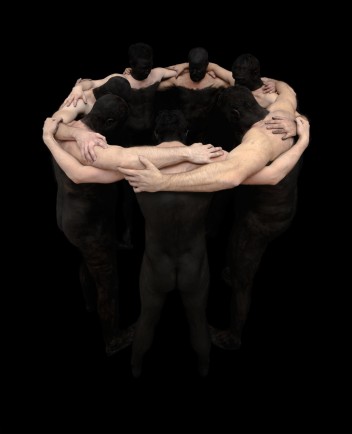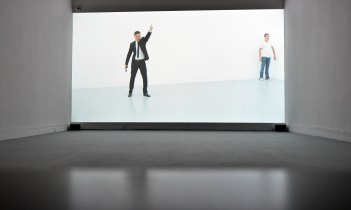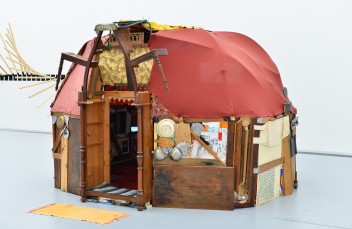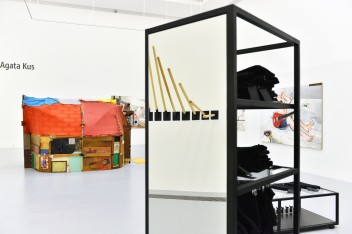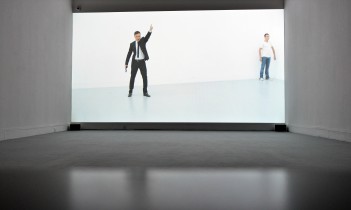VIEWS 2017 – Deutsche Bank Award
09.09 – 12.11.2017 VIEWS 2017 – Deutsche Bank Award
Zachęta – National Gallery of Art
artists: Ewa Axelrad, Przemek Branas, Agata Kus, Honorata Martin, Łukasz Surowiec
curator: Dorota Monkiewicz
cooperation: Maria Świerżewska
organizers: Deutsche Bank Polska S.A. & Zachęta – National Gallery of Art
Views 2017 is the eighth edition of the competition for young artists, organised by Deutsche Bank Polska S.A. and Zachęta – National Gallery of Art. The committee led by painter Paulina Ołowska selected five finalists. Participating in this year’s Views are artists born between 1984 and 1987, representing various regions of Poland, whose art is linked by a shared interest in humanity — both in the individual, as well as in the social perspective.
Ewa Axelrad has lived and worked in London and Gliwice (Poland), for many years. She creates installations, photographs, videos and sculptural objects. One of the recurring motifs in her works is violence observed in interpersonal and social relationships, and above all, its manifestations in everyday objects or architectural systems. Przemek Branas uses performance, video and installations in his works — combining biographical themes with symbols. He is interested in crossing boundaries marked by the body, culture and social functioning mechanisms. Agata Kus is primarily a painter, although she works with the medium of video as well. She paints mainly people. Her paintings are characterised by a simultaneous multiplicity of narratives bonded into one composition, their non-obviousness and ambiguity. She plays with form, using painting collages, pseudo-cut-outs, elements pasted in or crossed out and destruction. Honorata Martin, working and living in Gdańsk, is a multimedia artist, painter and performer. She is known for the radicalism of her actions and her search for the boundaries of physical and mental endurance. She studies extreme situations and the strong emotions that accompany the overcoming of one’s own fears. Łukasz Surowiec is an interdisciplinary artist and author of social actions. He is interested in political and historical interpersonal relations, but also the body and its borders. He practices socially engaged art — he works with marginalised people and initiates processes that often reveal the most uncomfortable problems.
The curator of this year’s exhibition is Dorota Monkiewicz — a long-time curator of contemporary art at the National Museum in Warsaw, author of the concept and director of the Wrocław Contemporary Museum (until 2016). She is currently associated with the Centre of Polish Sculpture in Orońsko.
The competition exhibition at Zachęta will start on the 8th of September 2017. The winners will be announced on the 26th of October. The winner will receive a prize of 60 000 PLN (15 000 Euro) and the second place prize is a study trip to Villa Romana in Florence. Traditionally, an audience award will also be presented.
The Views – Deutsche Bank Award competition, held every two years (since 2003) is a project aimed at supporting the development of young Polish art. Thanks to this initiative, we can honour the most interesting artistic positions and promote the best artists of the young generation in Poland and abroad.
As a result of the nominating committee’s deliberations held on March 17th 2017, the following artists were selected to participate in the 8th edition of The Views 2017 - Deutsche Bank Award: Ewa Axelrad, Przemysław Branas, Agata Kus, Honorat Martin, Łukasz Surowiec.
The artists were selected by a nominating committee consisting of: Magda Kardasz, Piotr Lisowski, Ewa Łączyńska-Widz, Paulina Ołowska (chairwoman), Stanisław Ruksza, Piotr Stasiowski, Stach Szabłowski.
The winner will be selected from among the participants by a seven-person Jury.
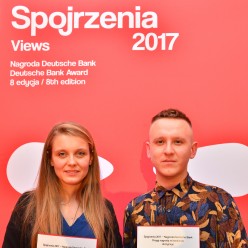
"The Jury awards the first prize to Honorata Martin for sensitivity, courage, and consistency in building relations based on affirmation and not antagonisms, for honesty and sincerity in discovering and reinterpreting the social sphere.The second prize, for activities at the intersection of history and art history, of truth and fiction; for the perfectly made film combining past and present narratives, indicating links between art and politics, the jury awards to Przemek Branas".
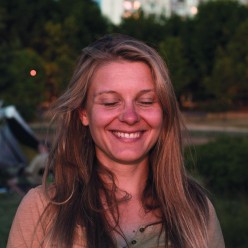
(born 1984) — painter, performer, multimedia artist. In the years 2004–2009 she studied at the Painting Department of the Academy of Fine Arts in Gdańsk (diploma in Mieczysław Olszewski’s studio, annex in Intermedia with Wojciech Zamiara). In 2007, she studied for one semester at Marmara University in Istanbul. The artist is known for the radicalism of her actions. The subject of her interest are extreme situations, strong emotions that accompany the overcoming of fears, crossing the limits of mental and physical endurance. She is a winner of the 3rd Geppert Award (2011) and the audience award at the Gdańsk Biennial of Art (2012). In 2015, she received the following awards: in the category of Culture and Art in the Polacy z werwą plebiscite; in the category of Culture — Discovery of the Year in the Pomorskie sztormy plebiscite, and the nomination to the Splendor Gedanensis Award, Gdańsk City Award for Young Creators of Culture. In 2016 she was nominated for the Polityka Passport Award. She lives and works in Gdańsk.
What work are you showing at the Views exhibition?
When my grandfather died, grandma almost invisibly cleared out his stuff —
a museum-like collection of everything, assembled in a flat on the tenth floor of a block in Gdańsk. Some things probably disappeared, the rest seemed very important. When grandma died, all the belongings lost their meaning. Today my father returned from southern Italy. He told me terrifying stories of people who had to abandon their homes. They dream of going back, in the meantime trying to assimilate and forget. Together with my boyfriend, we are trying to create a home in our car, I mean, he is more into it. Privileged (so far), safe and bored, we will willingly live in such a small space. When we’re fed up with it, we can come back. Unless something unexpected happens. When I was working on Going out into Poland, I realised how sense of security is important. During the Make Yourself at Home performance I had this sense thanks to people who accepted me. I was then trying to experience it; today, overwhelmed by a multitude of frustrating questions, I want to answer them with a simple gesture. I am not sure if it is possible at all — to put together so many different meanings of ‘home’. I don’t want to produce new objects. I want to build a sensible model made of things which lost their meaning, a model reminding of those who lost their foundation of security and permanence. I want to face issues I feel overshadowed with since I was a child. I wonder if such attachment to things still makes sense in the modern world, or will various forms of nomadism dominate in the near future.
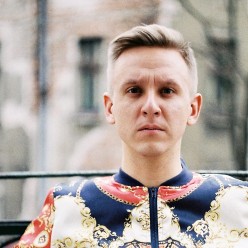
(born 1987) — performer, author of videos and installations. He graduated from the Intermedia Department of the Academy of Fine Arts in Kraków and is currently a PhD student of Interdisciplinary Doctoral Studies at the Poznań University of Arts. In his works he links biographical threads with symbols. He is interested in crossing the barriers determined by the body, culture and mechanisms of social functioning. He took part in the Embodied Action Festival in Hong Kong (2016) GUYU ACTION Performance Art Festival in Xi’an (China, 2016), Polish Performance Night, Le Lieu Gallery in Quebec (2014). In 2013, he received the scholarship of the Ministry of Culture and National Heritage, and in 2015 he was awarded the Grey House Foundation Award. He was a resident of Meet Factory in Prague (2016), Sesama in Jakarta (2017) and Terra Foundation for American Art in Giverny (2017). He lives and works in Jarosław.
What work are you showing at the Views exhibition?
On 16 December 1922 in Warsaw, during the annual Salon of the Society for the Encouragement of the Fine Arts at the Zachęta, Eligiusz Niewiadomski assassinates President Gabriel Narutowicz. The killer is sentenced to death, a verdict he asked for himself. He is executed by a firing squad on 31 January 1923. On 19 November 1971 American artist Chris Burden is shot with a rifle by his assistant. The historic performance, Shoot, recorded with a Super 8 camera, took place at the F-Space Gallery in Santa Ana, California. On 19 December 2016, the Russian ambassador to Turkey, Andrei Karlov, is opening the exhibition Russia Through Turks’ Eyes. From Kaliningrad to Kamchatka, at
the Museum of Modern Art in Ankara. He is shot dead by an off-duty Turkish police officer who has been planning his attack for a long time. In all three stories, it is clear what the motivations of the parties involved were, both the perpetrator and the victim. I’ve decided to combine all those into a single narrative. Working with history and the archive and redefining their aspects through the contemporary is my key preoccupation. Asking whether what we see is the truth makes me a person balancing on the verge of truth and myth.
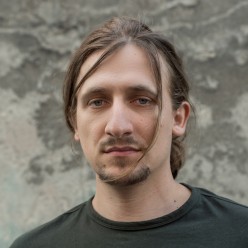
(born 1985) — interdisciplinary artist, sculptor, performer, author of videos, and social actions. Between 2007 and 2009, he studied at the Academy of Fine Arts in Poznań, in the years 2009–2010, at the Universität der Künste in Berlin. He graduated from the Faculty of Sculpture at the Academy of Fine Arts in Kraków and was a doctoral student at the Faculty of Art at the Pedagogical University in Kraków. He is interested in political and historical issues, human relations, but also the body and its limits. He deals with socially engaged art, works with marginalised people, and initiates activities that illustrate the most uncomfortable problems. His most prominent projects include Berlin Birkenau (2012), Waiting Room (2015), Tear Dealer (2014) and Clinic (2016). He received scholarships of the Ministry of Culture and National Heritage: education scholarship in 2009, creative — in 2012 and 2016, and for the best PhD students in 2017. He lives and works in Bytom and Kraków.
What work are you showing at the Views exhibition?
The project that I’m preparing for Views is formally similar to my earlier works
featuring the motif of economically utopian modes of exchange. This time I’ve
decided to take advantage of my skills in the field of apparel design to create
a collection inspired by the image of antifascist demonstrators using the ‘black
block’ tactic, which basically means wearing identity-concealing clothing. Designed and tailored, the garments will be presented with appropriate gadgets in a manner characteristic for the fashion industry. Spectators will be able to view, choose, try on, and buy them. The difference is in the mode of distribution. The chosen product can be acquired in two ways: through the classic procedure of purchase and through exchange. In order to acquire the product through the latter mode, one needs to submit photographic documentation, including a rights release form, or a self-made banner, confirming one’s participation in strikes or protests against all forms of power, eviction, exploitation, racism, fascism, xenophobia, or in protests/demonstrations in the defence of jobs, minorities, or social justice. The materials could eventually be made into a book or exhibition, and the funds collected would make possible the project’s continuation. Drawing on the
aesthetic of street-demonstration tactics, the project is an attempt to promote and broaden knowledge on resistance strategies and anarcho-syndicalist ideas raised by contemporaries. It seems to me that an exhibition sponsored by one of the world’s largest banks is an excellent place for disseminating such ideas.
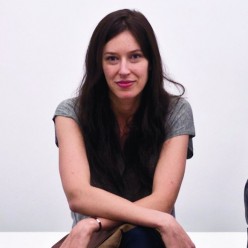
(born 1984) — author of installations, photography, video and sculptural objects. She graduated from the Academy of Fine Arts in Poznań and the Royal College of Art in London. The artist is mainly interested in the potential of the change in power and the dynamics of the process, as well as the role of aesthetics and design in social space. One of the recurring themes in her work is violence observed in social relationships and its manifestations in everyday objects or architecture. Axelrad’s explorations concern the past, both personal experiences and events present in collective memory. She is the laureate of the ‘Young Poland’ scholarship. Her works are in several collections, among others of Wrocław Contemporary Museum, Encouragement of Contemporary Art in Szczecin, Centre of Contemporary Art Znaki Czasu in Toruń, Museum in Gliwice, Griffin Art Space. She lives and works in London and Gliwice. She collaborates with BWA Warszawa gallery.
What work are you showing at the Views exhibition?
I will show a film and an installation from a new series called Shtamah. Rooted firmly in modern Polish, the word derives from the German Stamm, ‘tribe’. The need of group identification, a sense of collective identity, and the resulting sense of power are a theme that affect all of us, particularly in recent years, and not only in Poland. Patriotism and its side effect — nationalism — become the focus of my installation comprised of flag shafts and poles. The characteristic ‘8’ that you trace when waving a flag has lent this work a sinusoid shape. The other work, a short film, tackles the subject of the seductive power of armour and heroic martyrology. It takes its point of departure in the notion of esprit de corps, meaning a ‘sense of unity and of common purpose among the members of a group’, such as the military, and allowing those feeling it to push their physical limits as the result of a virtually transcendental sense that they are part of a larger entity. Ludwik Stomma, a researcher of the phenomenon, calls it a ‘brotherhood in arms, athletic love, contempt for the ‘other’, the uniform in place of mawkish conscience’. I’ve been interested in military iconography for a long time, but particularly so recently, when it has been increasingly embraced by paramilitary and radical nationalist groups. The allure of the uniform is something I am well familiar with — and certainly not immune to — but still approach it with a critical distance; this dissonance makes the subject particularly interesting to me.
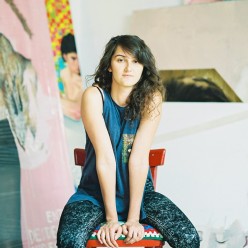
(born 1987) — painter, video artist. She is a graduate of the Department of Painting at the Academy of Fine Arts in Kraków (diploma in 2012 in Leszek Misiak’s studio). She paints first and foremost people, her compositions are characterised by a multitude of narratives, equivocal meanings, and ambiguity. She likes to play with form, such as painting collages, pseudo-cutouts, stickers, blurring and destruction of the painting layers. She is laureate of many awards and scholarships, including the main prize of the WRO Media Art Biennale 2015 in Wrocław for her multichannel video installation The Lover. Her paintings are, among others, in the Museum of Contemporary Art MOCAK in Kraków, the National Museum in Gdańsk, and numerous private collections in Poland and abroad. She lives and works in Kraków.
What work are you showing at the Views exhibition?
The continuing trend in art, driven by artists described by Jakub Banasiak as ‘reality-weary’, seems to be at odds with my paintings. Most of them are based on realistic representations, photographs and collages, images of actors and literary figures that matter to me. I try nonetheless to unrealise them in my own way, to find ambiguous, slightly disturbing contexts for them. My new series, part of which is featured in this year’s Views, differs from the older works. Instead of beautiful, intriguing girls, I’ve decided to paint ugly but vigorous boy. Above all, however, I fulfil the desire to portray a community I feel emotionally bound with and the original, amazing persons that with their colourful life provide me with me inspirations and themes imbued with mystery and humour — qualities I appreciate the most.
VIEWS 2017 – Deutsche Bank Award
09.09 – 12.11.2017
Zachęta – National Gallery of Art
pl. Małachowskiego 3, 00-916 Warsaw
See on the map
Godziny otwarcia:
Tuesday – Sunday 12–8 p.m.
Thursday – free entry
ticket office is open until 7.30 p.m.


